- Home
- Robert J. Mrazek
To Kingdom Come Page 2
To Kingdom Come Read online
Page 2
With a crew of ten men, the plane bristled with Browning .50-caliber machine guns, and Arnold was convinced that the Fortresses could protect themselves from enemy fighters by flying in tight formations that gave the machine gunners in each “combat box” interlocking fields of fire.
In the draft of the speech he would be delivering in London, he had written, “I do not envy the prospects of a German fighter pilot these days. Say he chooses to attack the lead squadron to break up the whole group. The forward firing guns of every fort in the lead squadron, 8 guns to a fort, 48 in all, are bearing down on him—if he zooms over the flight, some 50 top turret, waist, and radio hatch guns of that flight, plus the ball turret, waist and tail guns of the high squadron get a crack at him.... The life of a young German in the Luftwaffe will not be a happy one from now on for of only one thing can he be certain—death.”
With enough Fortresses, he was sure that the Eighth Air Force could bring Germany to its knees. And that was the problem. So far, he hadn’t been permitted to put together the critical mass of bombers he needed to prove his case.
After almost two years of war, he was deeply weary of the Washington infighting with his fellow chiefs, as well as the concessions he was being forced to make to the British. Now that the bombers were finally coming off the assembly lines in sufficient numbers to carry out their planned purpose, the other chiefs were trying to take them away from him like a pack of carnivores, devouring his air force limb by limb.
The British were the worst. At the beginning of the war, they had tried daylight bombing and failed. Now they bombed only at night, setting German cities on fire under the cloak of darkness, waging war on civilians. Terror bombing would never break the will of the Germans, Arnold concluded, just as it hadn’t worked when the Germans blitzed London every night for months. It had only strengthened the will of the British people.
The British, led by Prime Minister Winston Churchill, had strongly opposed Arnold’s plan for the daylight precision bombing campaign against Germany, telling Roosevelt and the other American war chiefs that it would only lead to disastrous losses of planes and crews. If the British couldn’t do it, how could the Americans succeed?
Churchill had assured Roosevelt that the British could put Arnold’s B-17s to far better use, and requested five thousand of them for the Royal Air Force. After Arnold successfully rebuffed this demand, Churchill asked Roosevelt to give him two hundred fifty Fortresses to use as U-boat killers in the North Atlantic. With deft stalling tactics, Arnold parried this move as well.
It wasn’t just the British. The American war chiefs were almost as bad. Admiral Ernest King, the chief of naval operations, was requesting that Arnold send hundreds of heavy bombers to the Pacific for the war against Japan. The navy planned to use many of them for long-range patrolling flights. It was ridiculous. Even General Douglas MacArthur, who commanded U.S. forces in the Southwest Pacific, had gotten into the act. He was demanding hundreds of B-17s, too.
Arnold fought them every step of the way. He had learned to play the Washington game as well as he knew how to fly, and was ready to undertake any step to advance the cause. At one point he received a handwritten note from President Roosevelt concerning his son, Elliott, who had joined the army air forces.
“I am a bit concerned because Elliot has a rather bad chronic case of haemoroids (sic) that need to be operated on,” wrote the president. “He rightly insists on going through with his new assignment ... but I hope you can give him enough time off in Texas to have them taken out.” Arnold made sure it happened.
By April 1943, Arnold had expected to have three thousand bombers and fighters in England for his Eighth Air Force to conduct its daylight bombing campaign against Germany. Instead, a third of them had been sent to the Pacific for the war on Japan, and another third had been diverted to other theaters.
Utilizing all his political and organizational gifts, Arnold had managed to slowly build up the Eighth Air Force in England, bomb group by bomb group, against the ongoing opposition of Churchill and the others.
He had promoted General Ira Eaker, one of his most trusted subordinates, to command the Eighth’s bomber force. In 1942, Eaker began the first daylight bombing raids against targets in France with his new and untested crews. They did well.
However, when President Roosevelt made the decision to invade North Africa in November 1942, the majority of the bombers, maintenance crews, and experienced flight crews were transferred to the Twelfth Air Force in Algeria.
In April 1943, Arnold was able to send four new bomb groups to England, bringing Eaker’s B-17 strength back to more than four hundred combat crews. Over the summer, the buildup continued.
Arnold’s new goal was to have at least a thousand heavy bombers attacking Germany every day that the weather cooperated, deploying fleets so huge that the Luftwaffe would be engulfed, overwhelmed, and given no chance to recover.
But time was running out to prove his case. With the recent Allied invasion of Sicily in July, and the continuing demands of King and MacArthur in the Pacific, there was ever-growing pressure on him to divert his air resources from the Eighth Air Force to other commands and combat theaters. It was now or never.
The early morning of September 1 was black with rain as Arnold’s C-54 Skymaster finally reached landfall over the Irish coast after flying more than two thousand miles. His navigator established their position, and Captain Niswander turned onto the compass heading for Prestwick, Scotland, which was thirty miles southwest of Glasgow along the Firth of Clyde.
When the weather worsened, Niswander was forced to fly solely on instruments. As they approached Prestwick, he contacted ground control and was told that due to heavy rain and fog, the ceiling was less than two hundred feet.
A waiting line of military aircraft was stacked up and circling the fog-bound field at different altitudes, including more than fifty B-17s and B-24s that had flown out of Gander ahead of Arnold’s Skymaster. Many of the pilots and crews were new, and they were running out of fuel.
With its four-thousand-mile range, the Skymaster had enough gas to circle the field for hours. This was one of the rare occasions when Arnold’s impatience was tempered by the knowledge that men’s lives were at stake. He ordered Niswander to wait until all the Fortresses had landed before attempting his approach.
A ground control officer at Prestwick radioed Niswander to urge him to divert to another airfield, but Lieutenant Fisher, the plane’s navigator, couldn’t locate the airfield on his map, and the ground control officer couldn’t tell him where it was.
Arnold asked Captain Niswander to set the Skymaster’s radio to the frequency being used by the B-17 and B-24 pilots, and to pipe the feed into his compartment. One after another, he heard the pilots calling in.
“Number twenty-six ... one hundred eighty gallons of gas left,” radioed one officer as Arnold recorded his words in his diary. “Number thirty-two . . . sixty gallons left.”
The planes were being brought down by the controllers one by one.
As the C-54 continued to circle in the dense fog, several of Arnold’s staff officers became visibly nervous. He set them at ease by casually regaling them with stories of his own past crashes.
Minutes later, one of the B-17s crashed trying to land. All aboard were killed, and the runway needed to be cleared before the controllers could resume landings. Soon after, a second B-17 went down after running out of fuel. Its crew was lost as well.
Then Arnold heard another pilot over the radio.
“This is number sixty-two,” came the laconic voice. “You won’t have to worry about us anymore. I’m plumb out of gas. So long.”
At 0930, with the rest of the bombers safely on the ground, Captain Niswander brought the Skymaster in for his landing. They had been in the air more than twelve hours.
Arnold was deeply angered by the communications and radio control failures that had led to the loss of the bomber crews before they ever flew a combat mission. He was
convinced that it was just one of many systemic problems in the Eighth Air Force, and he was ready to shake things up at the highest level, if necessary.
At the highest level was its commander. Major General Ira Eaker.
Ira
Wednesday, 1 September 1943
Royal Air Force Base
Prestwick, Scotland
0730
Major General Ira Eaker stood at the foot of the ramp as Hap Arnold emerged from the C-54 Skymaster and came down the steps to meet him. They shook hands and greeted each other without genuine warmth.
Outwardly self-assured, Eaker privately viewed Arnold’s inspection tour with foreboding. The two generals had been openly feuding for the previous three months, and it had seriously eroded a bond of mutual trust and friendship that went back more than twenty years.
Eaker thought that Arnold might be coming to relieve him of his command. It was the most important combat command in the air force, and he had come to relish its myriad challenges. He was prepared to do everything in his power to keep it, short of acceding to orders he was convinced could lead to its destruction, along with the destruction of the lives of thousands of young men whose fate rested on his decisions.
Arnold and Eaker enjoyed a complicated relationship.
Born in 1896, Ira Eaker began life in a six-family rural settlement in southwest Texas. His father, Y. Y. Eaker, was a proud and hardworking farmer, but continuing droughts in Texas made economic survival for the family a constant challenge.
Like Hap Arnold’s father, Y. Y. Eaker was remote and uncommunicative. In Ira’s case, it led him to seek out more responsive father figures as he grew older. His mother became the chief influence on his life.
Possessing only a grade school education herself, Dona Eaker was somehow convinced that of all her children, Ira was destined to accomplish great things. Early on, she imbued him with the drive to aim high in his goals.
In 1914, the family moved to Durant, Texas. It was their first home with electricity and running water. After Ira finished high school, his mother encouraged him to enter a nearby teachers’ college, where he subsequently achieved the highest grades of any student who had ever attended the school.
Fastidious in his personal habits, he always dressed for classes in a suit. It was the only one he owned, and each night he cleaned and pressed it before going to bed. He made no time for a social life, although he did join numerous athletic teams and extracurricular clubs, excelling in every activity. It was as if he had embarked on a lifelong mission to succeed. In what, he didn’t know, although his mother hoped he would someday become a distinguished judge.
On April 6, 1917, the United States entered the First World War. On the following day, Ira drove with friends to Greenville, Texas, and enlisted in the army. Because he was about to graduate from college, he was sent to an officers’ training camp.
At twenty-one, he was not an impressive physical specimen, standing five feet eight and weighing 115 pounds, but he met all the physical and mental challenges. After completing officers’ training, he was commissioned a second lieutenant and received orders to attend flying school.
The war ended before he earned his wings, but in the years afterward he came to love flying and became a gifted pilot, setting a number of flight endurance and distance records while also serving in a variety of staff and operational posts.
In 1922, he married the high-spirited Leah Chase, the daughter of an aerial flight surgeon. The marriage lasted only seven years. Like Hap Arnold, Eaker was devoted to his career. Leah Eaker found her pleasure in an active social life.
In the 1920s, Eaker served on the staffs of two senior generals in the air service, having an almost father-son relationship with each one as he continued his rise up the promotion ladder.
The ultimate father figure in Eaker’s life appeared in the form of Hap Arnold.
Eaker first met Arnold while serving under him at Rockwell Field in San Diego. Arnold was impressed with Eaker’s brains and grit. Eaker admired Arnold’s willingness to risk his career to build an independent air force, and signed on as an eager protégé.
In the years that followed, Eaker persevered to help Arnold achieve his goals. Like his mentor, Eaker came to believe in the sacred doctrine that daylight precision bombing alone could defeat any of America’s future enemies.
In 1942, Eaker had been Arnold’s first choice to command the Eighth’s heavy bomber force, and to prove its value in the skies over Europe. When the first bomb groups arrived in England in the summer of 1942, Eaker broke them in by attacking lightly defended military targets in France. He led the first mission himself.
On each succeeding daylight mission, American and British fighters escorted the Fortresses to and from the targets, defending them from enemy fighters. The losses in planes and crews averaged less than 3 percent, which Eaker considered acceptable.
In December 1942, he was promoted to command the entire Eighth Air Force, and over the next six months he slowly began to extend the range of the bombing targets into Germany, well beyond the capability of Allied fighters to accompany them. In these deeper-penetration raids, losses grew from 3 percent to nearly 10 percent of the crews.
These results caused Eaker to slowly change his mind about the Arnold mantra that the Fortresses could reach targets deep inside Germany without the support of long-range escort fighters. He had seen the debriefing reports in which returning crews repeatedly asserted that even superb air discipline hadn’t prevented the loss of many crews to concerted enemy fighter attacks.
He began a quietly aggressive campaign designed to convince Arnold to expedite the delivery of long-range fighters, and he requested a delay in further deep attacks into Germany until his current fighters could be equipped with jettisonable belly tanks to extend their range.
Arnold, who had just suffered his second heart attack, began to privately question Eaker’s toughness. He wouldn’t be able to deliver long-range fighters for months. By then, it might be too late to save the daylight bombing campaign. How could he hold off MacArthur and Admiral King from poaching his planes if he couldn’t show positive results?
He cabled Eaker a new series of demands, including an order to replace Eaker’s senior commanders with more aggressive officers who understood the urgency of the situation. Why weren’t they sending the new groups to Germany? he demanded to know. Why were so many of them grounded due to combat damage?
Eaker cabled back his own stinging reply.
“We get nowhere with recriminations,” he wrote.
On July 25, 1943, a beleaguered Eaker announced the launching of the Eighth Air Force’s long-awaited bombing offensive against Germany. Over the next week, seven different industrial and military complexes were attacked, including Hamburg, Hannover, Warnemunde, and Kassel. The bombing results were good, but bomber command lost a staggering total of one hundred Fortresses and a thousand men in the raids, 20 percent of its available planes and crews.
Eaker suspended the attacks on Germany until new replacements arrived.
The air offensive was resumed on August 17, 1943, when 146 Fortresses bombed the Messerschmitt factory complex in Regensburg, Germany, while 230 Fortresses hit the ball-bearing factories at Schweinfurt, Germany.
It was the most intensely fought air battle of the war up to that time. Both targets suffered extensive damage, but the Luftwaffe shot down sixty American bombers, thirty-six in the Schweinfurt attack and another twenty-four in the Regensburg force.
Although Eaker publicly hailed the Schweinfurt-Regensburg mission as a decisive victory, he privately wondered how long they could go on taking such enormous losses. With bomber command’s morale shattered, Eaker canceled all further attacks for ten days.
Two weeks later, Arnold arrived in England.
On the afternoon of September 1, they flew together from Prestwick to London. Eaker briefed Arnold on the details of his schedule for the next five days, which included inspections of airfields, bomb groups, f
ighter units, maintenance facilities, military hospitals, hospitality centers, and meetings with the top British and American commanders.
On the morning of September 2, Arnold flew from London up to Eaker’s Eighth Air Force headquarters, which was located at High Wycombe Abbey, formerly a school for well-bred girls, in the Chiltern Hills northwest of London. When Arnold arrived at the castlelike grounds, a brass band was on hand to mark his arrival, and he was greeted with a formal escort of honor.
Inside the sprawling mansion house, Arnold met the officers on Eaker’s staff and was briefed on Eaker’s method of operations, the types of air formations he was using, and the number of serviceable aircraft he had available after the recent battering over Regensburg and Schweinfurt.
After lunch with the senior commanders, the afternoon was devoted to a conference in which Arnold and Eaker could “discuss the employment of the Eighth Air Force, its present status, and its ultimate objectives.”
Arnold pulled no punches.
He told Eaker that at the recent meetings in Quebec between Roosevelt and Churchill to finalize plans for the invasion of Europe, the British had taken the opportunity to strongly criticize Arnold for his stubborn adherence to daylight precision bombing. Now, General George Marshall was beginning to waver in his support for the campaign. Proposals were in the works to shift the assets of the Eighth Air Force to other theaters. Time was running out.
In two days Arnold would be holding a press conference to proclaim the success of the Eighth’s new air offensive against Germany. What would he tell them? That they were going to attack France again?
On the previous day, Eaker had sent his Fortresses to bomb airfields near Paris.
Arnold told Eaker he would have to renew the air offensive against Germany with the assets he had. It was time to prove the effectiveness of daylight precision bombing once and for all. The Fortresses would have to protect themselves by using tight group formations. Battle cohesion would make the difference.

 Valhalla
Valhalla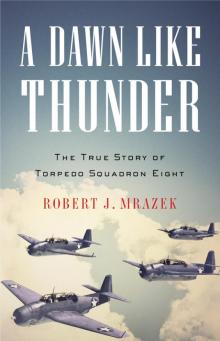 A Dawn Like Thunder
A Dawn Like Thunder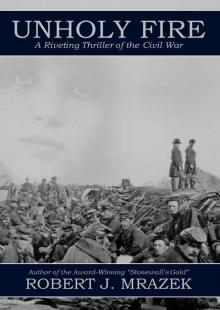 Unholy Fire
Unholy Fire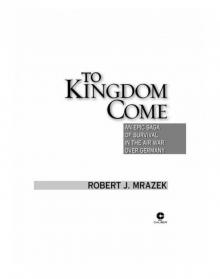 To Kingdom Come
To Kingdom Come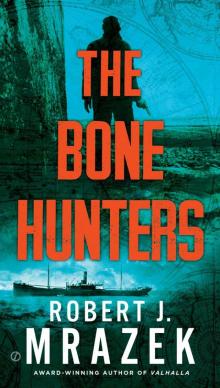 The Bone Hunters
The Bone Hunters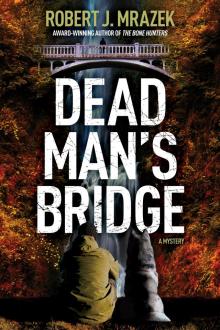 Dead Man's Bridge
Dead Man's Bridge